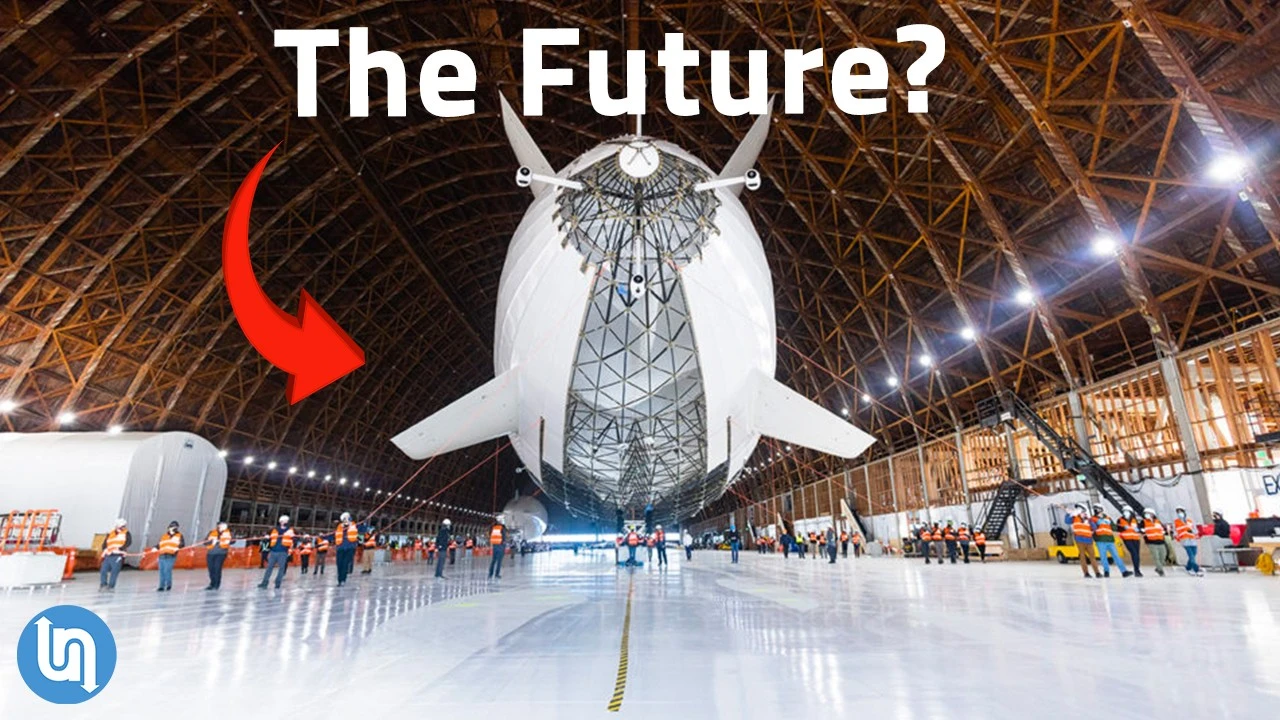
I hope so. I don’t think there’s a better way to achieve air transport free of greenhouse gas emissions than with airships.

Plus there’s some really cool potential in moving bulky cargo (like windmill parts) overland where you’d otherwise have to cut down trees, take down power lines, and remove other obstacles around highways or train tracks. Plus the ability to act as a flying crane has some cool potential in stuff like delivering modular hospitals and other aid to disaster areas.

People have been pushing this for awhile. It’s not going to happen.
Pathfinder 3, at 600 feet long and 100 feet in diameter, is designed to carry about 20 tons ref
and its cruising speed will likely be comparable to Pathfinder 1 at ~70 kph (dependant on relative windspeed).
By comparison, the Airbus A350F has a payload capacity of 109 tons and a cruising speed of 900 kph, and doesn’t care about relative windspeed.
So the airship might deliver 20% of the cargo at 8% of the speed. This isn’t useful. There is no use case in which this will make sense.
It’s a luxury air yacht pipe dream for rich people, a hobby for a bored Google founder who doesn’t know what else to do with his money.

Maybe people will accept certain types of freight not travelling at insane speeds?
No, shareholders would weep bloody tears.

Have to end Just In Time delivery which basically every business works on now for it to even be suggestable.

Jammed In Trailers, you say?

Certain types of freight are already expected to travel slowly… but mostly heavy/bulky items that don’t make sense to put on an aircraft where weight and space come at a premium. That calculation isn’t really going to change with airships, it will still make more sense to put those items on a train, a truck or a boat at much lower cost.
Really the only reason to ship cargo by air is the speed… if you can’t get the speed why bother with air at all?

If we can get serious eco reforms done (and the word “if” is doing a lot of work here) it’ll come down to which has the least emissions per mile.
We could also do more airship freight to facilitate economic growth in places that have poor infrastructure, or through terrain it would be too damaging to cut a highway through.
But then, when have we ever sacrificed money for a better world?

I think a better luxury air yacht could be done better: Make a lightweight house boat. Attach a n airboat drive. Fly a pioneer aerospace parafoil off the deck and sip mimosas on the deck while cruising at 28mph over the Amazon basin.

As like a personal private yacht? Do you also own a private hangar and work crew for maintaining your personal air yacht? Are you Sergey Brin?

Houseboats don’t take much maintenance or hangars. Yes certainly my own private flying yacht. I don’t want to share it people I might not like.

That’s because we’ve been stuck with an irrational mode of production that requires too many people and goods to get far places quickly while burning lots of fossil fuel. A more logical system would only have people traveling by jet and helicopter on an emergency basis. People traveling on vacation or non-emergency business should be able to slowly cruise in relative comfort on battery and solar power. Airship ports can be built along the paths of the atmospheric streams and then rail can be used for the next leg of travelers’ journeys.
As far as capacity goes that’s just a matter of building bigger airships and using relatively cheap hydrogen instead of helium as the lifting gas.

Realistically, the current air travel infrastructure wasn’t built on tourism, it was built on serving business needs - freight, personnel movement, meetings, sales. You’re talking about replacing that infrastructure, or at least competing with it, while also being dependent on rail infrastrcuture…
In order to grow this airship system will have to offer some substantial practical advantage over the existing one. The thing is, if I’m shipping something and speed isn’t important then rail/truck is fine and I don’t see airship freight being cheaper than that. So if the airship doesn’t fit the fast/expensive use case, and it doesn’t fit the cheap/slow use case, then what is the competitive advantage?
As far as capacity goes that’s just a matter of building bigger airships
There’s a practical upper limit to how big these things can be. Regardless of fancy new structural materials, it’s a giant gasbag… the larger it is the more of a problem any crosswind is.
using relatively cheap hydrogen instead of helium as the lifting gas.
It’s going to be a long time before any safety oversight group gets on board with this.

Most freight should still go by sea and rail. There’s no beating those modes especially if the railways get fully electrified and container ships transition to nuclear power. The case for long distance point-to-point transport of large, special equipment is still there, but I don’t think it really changes the world. Rather, the substantial, practical benefit of airships is moving people more humanely and with lower greenhouse gas emissions. Video conferencing and telepresence is good enough these days that there isn’t a good reason anymore for people to cross oceans in a matter of hours except in an emergency. Eventually, emissions costs will stop being externalized and at that point airships could fill the fast-enough/cheap use case.
I don’t understand what you mean about crosswinds being a problem. Increasing the lifting capacity of an airship only increases the effect of crosswind relatively modestly. That’s because a given increase in the relevant cross sectional area of an airship roughly corresponds to a square increase of the volume, which directly correlates to lifting capacity. To think of it another way, any crosswind penalty to increasing the lifting capacity of an airship can be negated by allocating some of that additional capacity to increasing the available thrust of the propulsion system. Therefore, crosswinds become less of a problem for airships as they get bigger.
There are already robust standards in place for working with hydrogen and as of 2022, the EU has adapted their regulations to allow for hydrogen as a lifting gas. It is still prohibited in North America, but the FAA is already giving initial approval for hydrogen fueled airplanes, which of course requires high pressure hydrogen fuel tanks, an arguably riskier proposition than ambient pressure gas cells. Anyway, it seems like one way or another, hydrogen is the future of flight.

Who the hell wants a two-day blimp ride to London?

I mean it would be a fun experience, but so is taking the Quean Mary II and even she struggles to stay in the black dispite being eminently more practical.
Over land a train will always win, and in the ocean and in the ocean there are ships that can outrun it.
More to the point, people travel by air because it’s fast enough to get you anywhere in the world in a day, give or take. Biofuels and even direct fuel synthesis using atmospheric carbon powered aviation is always going to beat out airships because airships do not solve a useful problem for travel.

This is how I see it. There isn’t a practical use case that makes airships attractive compared to other options, and tourism will never be enough to sustain it at scale.

I think that was an Archer reference, but I’d rather spend two days on an airship with a bunk, a dining room, and a bar, than seven hours stuck between potentially two of the worst people I will ever meet and with barely any room to stretch my legs.

It’s a nice thought, but frankly if you have the ability to spend your time like that while traveling then you’re probably already in the target market for this… wealthy people with money and time to burn. How often do you find yourself booking train cabins for long-distance travel?
And yes, it absolutely was an Archer reference.

Wealthy people already have their private jets. The only way it makes sense for regular people to cross the Atlantic in less than eight hours is for it to be a nominally miserable experience while of course burning lots of fuel with all the negative externalities that entails. Passenger jet forces us to put up with some significant problems and I think airships are just a better way.


